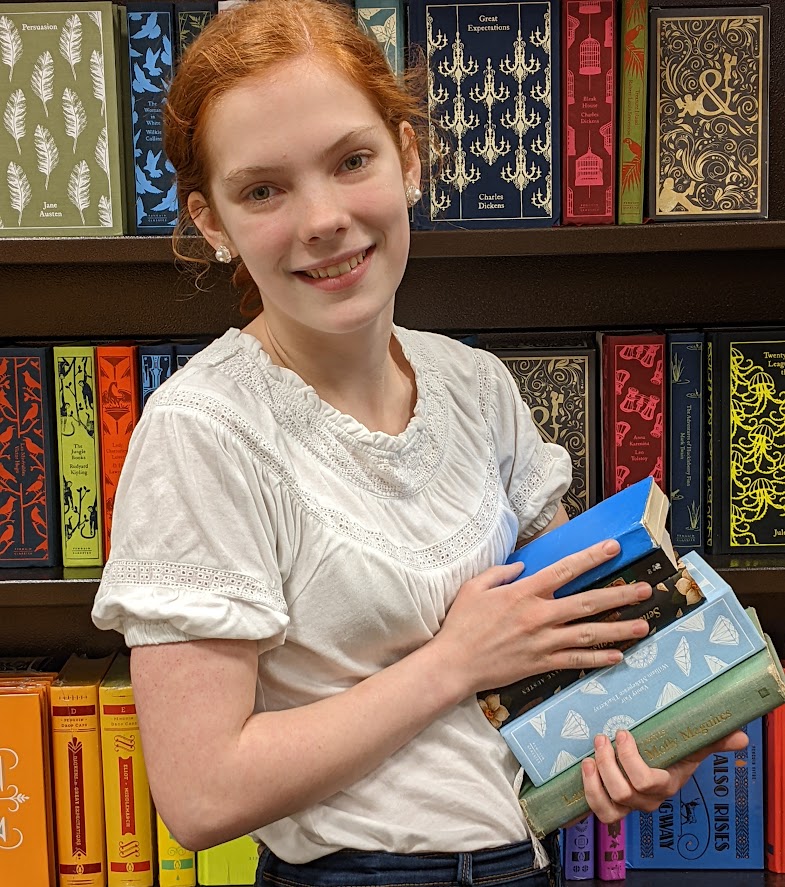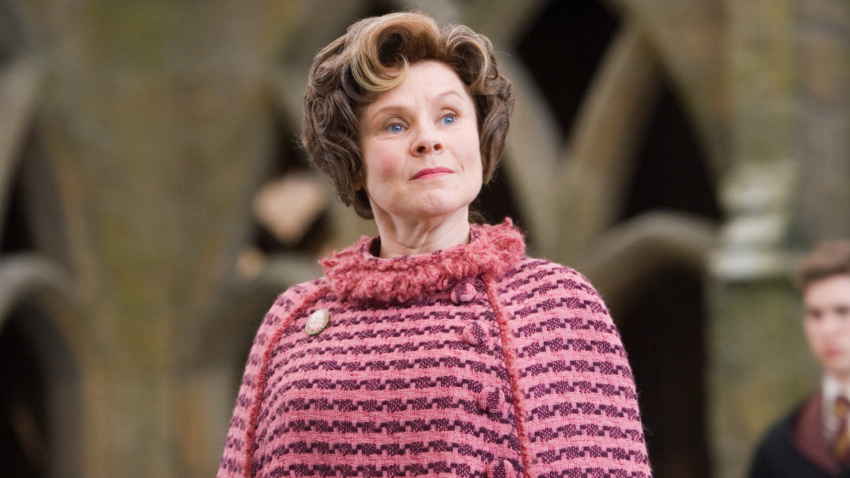Some villains seem more evil than others. As an author, you don’t want your villain to only raise your stakes or move your protagonist’s character arc along. You want your villain to be the most hated, despised character in all of fiction.
And it’s a high bar.
Dozens and dozens of villains have been created for fantasy, sci-fi, and action adventures. Most readers have seen it all. You want your villain to stand out. And it isn’t the right aesthetic, highest body count, or even the best motivation that makes these villains so especially villainous (although these things can help when used properly). Rather, three common threads seem to run through the villains that hurt your protagonist (and your readers) the most. And to explore these threads I would like to contrast Professor Dolores Umbridge with Voldemort, two villains from the Harry Potter series.
Although Voldemort murdered both of Harry’s parents, had his godfather imprisoned for thirteen years, killed hundreds of people, and tore multiple families apart, Voldemort comes across as a rather ordinary villain.
Meanwhile, even though Umbridge was not responsible for any deaths, did not murder Harry’s parents, and wasn’t even the main villain of the series, anyone who has read the books or even seen the movies can tell you that they absolutely hate her. Why did they hate her so much when she did much less practical damage than Voldemort?
J. K. Rowling utilized three specific tools when planning Umbridge’s infuriating actions that made her into one of the most hated characters in fiction, and those tools are what we’ll be exploring today.
Make It Personal
Umbridge’s villainy was extremely personal to Harry. She sets about destroying the only thing that Harry truly cares about — Hogwarts. Harry, without parents or guardians that love him, finds refuge only at Hogwarts. There he meets friends, mentors, and a few enemies. These enemies (Draco, Snape, etc.) were not nearly as hated as Umbridge because, like Voldemort, they didn’t try to go for something that was personal to Harry. Draco insulted him and Snape was an exceedingly unfair teacher, but Harry has been insulted enough that Draco’s thoughts don’t bother him. Harry also showed little concern over what grades he got as long as he passed. (Contrast this with Hermione, who worked tirelessly throughout the entire series to maintain extraordinarily high grades.)
Similarly, Voldemort does little to harm Harry as personally as Umbridge did. Of course, the readers are supposed to feel angry since he murdered both of Harry’s parents, but since this was before Harry could remember them, being an orphan is all Harry (and thus the readers) have ever known. The Dursleys have treated Harry horribly since he came to live with them after his parent’s death, but we only get a chapter or two dealing with them per book. Most readers are frustrated with their lack of fairness and compassion towards Harry, but since the vast majority of the series is spent away from them, it is hard to feel more than fleeting exasperation with their irrational and unfair treatment. They aren’t an imminent threat to Harry or his happiness, since they disappear as quickly as they came. Therefore, the death of Harry’s parents fails to have much of an impact on the readers.
It has much less impact, for example, then watching Umbridge destroy Harry’s only home and turn it against him. Hogwarts is literally the only thing that Harry’s character is shown to have an unusual affection for — friends, lost family, and mentors are all expected to be important to your protagonist, so his affection for them reveals little about his character. Hogwarts, on the other hand, stands out, because it shows a desire in Harry that not all characters share as deeply — the desire for a reliable home.
Make It Imminent
Umbridge was an imminent, unpredictable threat. While the Dursleys stayed in their neat little box (the first few pages of each book), Snape remained in his allotted chapters (the episodes chronicling potion lessons), and even Voldemort only appeared in dramatic climaxes for Harry’s bookly near-death experiences, Umbridge was not only imminent, she also burst the bounds originally put on her character and extended to touch every part of what Harry cared about. Originally, she was only a teacher, which was irritating and unfair, but no more than Snape had been. Then she became the High Inquisitor, which began hurting other teachers that Harry cared for and respected. Then she attempted to have Dumbledore arrested, which effectively exiled Harry’s mentor. Then she assumed the role of Headmaster, giving her power over the entire school. With this power she outlawed Harry from Quidditch and threatened to ban his entire team, keeping him from his passion. When she found him leading banned meetings on school grounds, she kidnapped him and threatened torture.
The readers hated her so much more than Voldemort because she imminently and uncontrollably hurt things that Harry cared about. While Voldemort was a more predictable, safe villain (because he did everything that a villain is expected to do) he did not come across as nearly as eminent or unpredictable. He stayed in the bounds originally put on his character, and from the reader’s perspective, this made him predictable, almost cliche.
Make it Unique
While Voldemort was scary and even hurt Harry in some very personal ways throughout the series and toward the end, we ultimately knew what was going to happen. Part of what made Umbridge’s actions so chilling was that she was unlike any villain we had ever seen before. We’ve seen the cool, calculating villain several steps ahead of the protagonist more times than we can count. But a sweet, girlish woman in her sixties with a serious thirst for power and an inability to accept truths that go against her worldview? No one had heard of anything like that before Umbridge.
J. K. Rowling crafted a character that was almost a caricature. For protagonists and other major characters, going this route is often disastrous because to seem real and relatable, characters have to have many dimensions. But most villains aren’t meant to be relatable (article coming soon about how to write villains that are!), so having them be a caricature is not only fine, it can let you explore the consistently aggravating aspects of their personality without worrying about whether or not your audience will understand or relate to them (for example, Umbridge’s constant use of “Hem, hem,” to interrupt people she disagrees with. I can’t think of a single similar habit that Voldemort has. Except maybe killing people and cackling away into the night — and all villains do that).
This is one of the biggest things you can do to make your villain the most hated character in your book. Everyone’s seen the same villain troupe over and over again, with the same cliche lines and dark and ominous decor. When writing your villain, break out of this mold and create a villain that no one’s ever heard of before. Making your villain different from the cliches is one of the biggest things you can do to make your villain seem personal, eminent, and unique, since few of the cliche villains succeed in these areas.
Writing villains can often be seen as the easy part — just give them a tragic backstory, an ominous aesthetic, and the right motive (Power!! No, seriously. It’s always power. Which is a goal, not a motivation… ). If you want to pour your heart into your protagonist and side characters and don’t have time for developing a hated villain, that’s okay. Not all plots can support villains that are as hated as Umbridge. But it is surprising how much having a common enemy can make your readers relate to even the least relatable of your characters, or even how much more satisfying the ending can be when your protagonist finally takes down the villain your readers hate so passionately.



What villains do you hate the most? Why? Are they imminent, personal, and unique, or is there another aspect that set that villain apart? And how was the article? Too sweet? Too sour? Just right? Comment below and let us know!


Hi! My name is Mara, and I’m a Christian artist, violinist, and blogger. I remember the day that I decided that I would learn something new about what makes a good story from every book I picked up — whether it was good, bad, or a mixture of both. I use this blog as a way of sharing some of the tips and tricks I’ve learned, and highlight which books, cartoons, and movies have taught me the most about writing an awesome story.


This post is relevant, mind-blowing, and authentic. You presented character traits I never considered. These traits fit my WIP so well, I can’t wait to flesh them out on paper. Brilliant deduction, Mara!
You have a new fan on me@